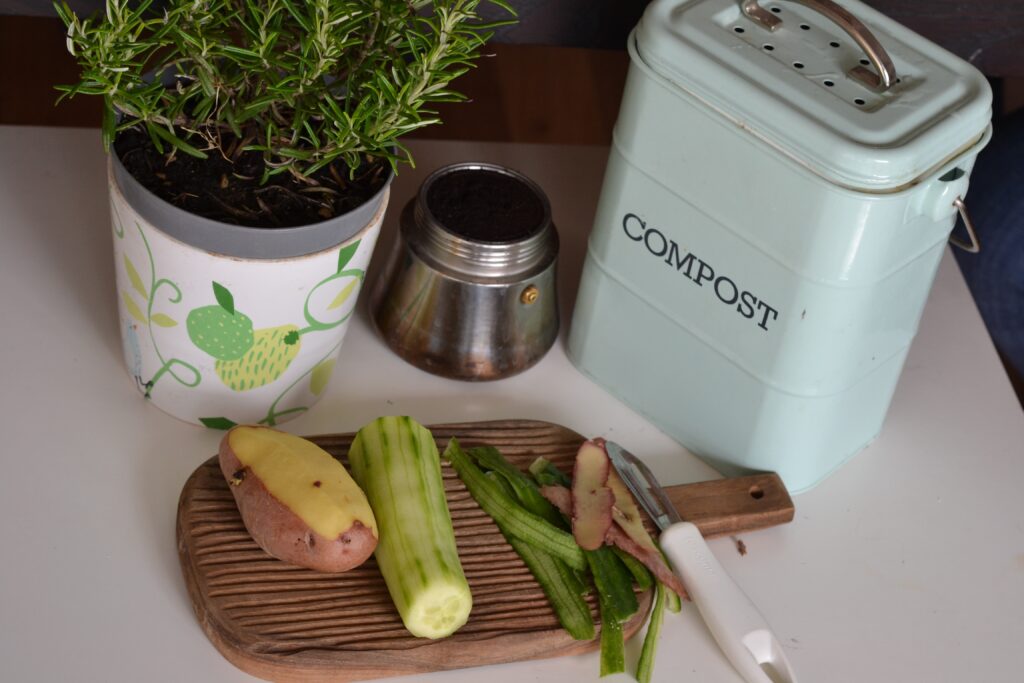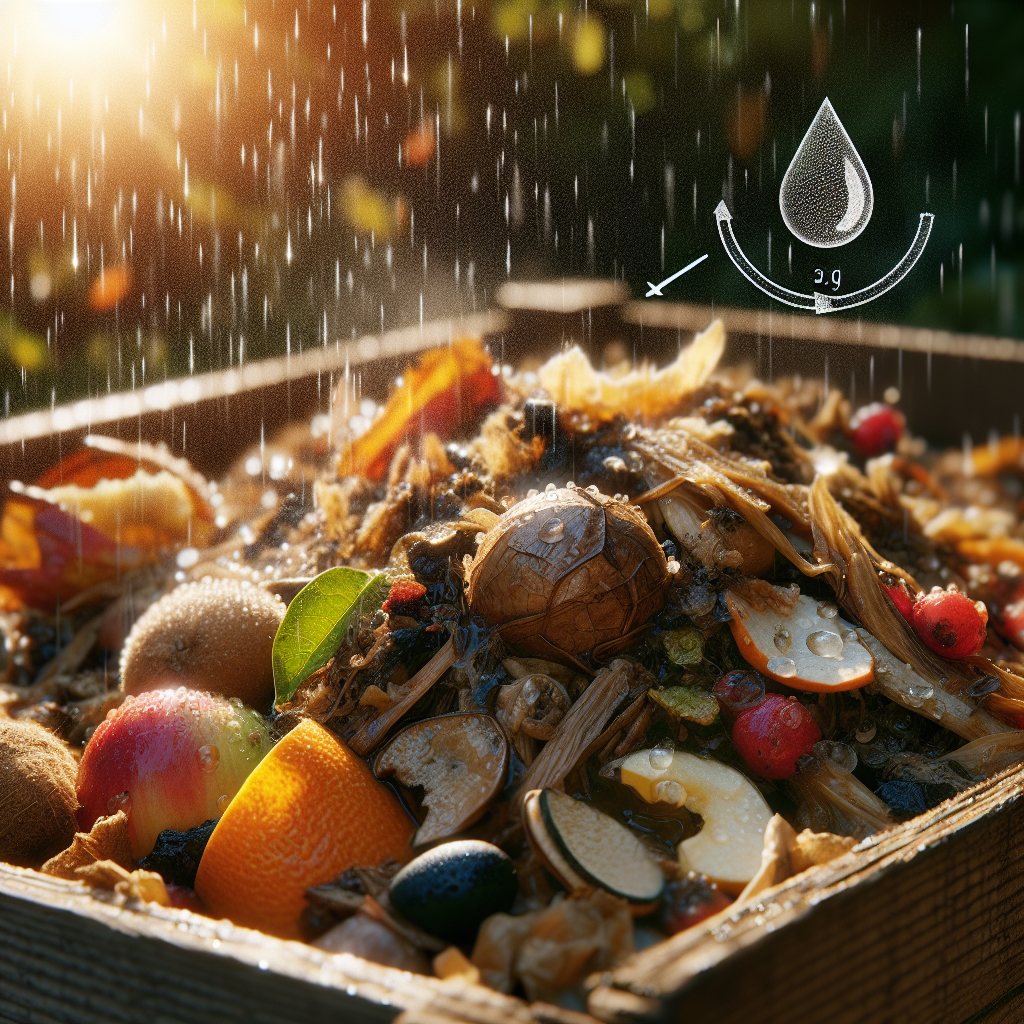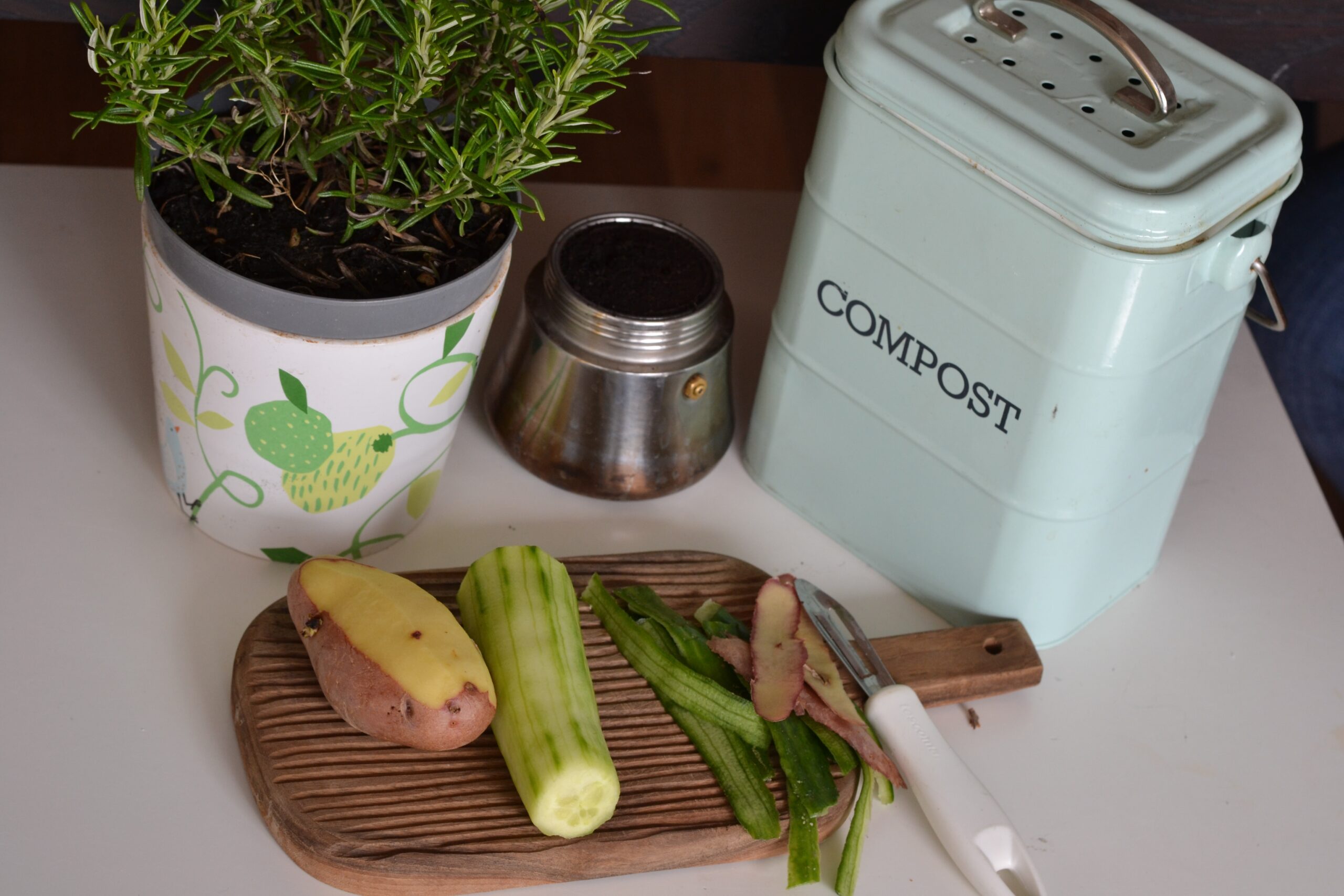Do Compost Bins Need To Be In The Sun: Introduction
Do Compost Bins Need To Be In The Sun? Imagine having a thriving compost bin right in your own backyard. Not only does it reduce waste, but it also provides nutrient-rich compost for your plants and gardens.
But here’s the question: do compost bins need to be in the sun? In this article, we’ll explore the importance of sunlight for compost bins and uncover whether or not it’s essential for their success. So, if you’ve ever wondered if your compost bin should bask in the sunshine or find shady spots, let’s dive in and find out!

Check Out Our Recommended Composting Products on Amazon Right Here!
Benefits of Sunlight for Compost Bins
Increased temperature
Sunlight plays a crucial role in increasing the temperature inside compost bins. The heat generated by the sun’s rays encourages the breakdown of organic matter, leading to faster decomposition. With higher temperatures, the microorganisms responsible for the composting process become more active, resulting in a more efficient breakdown of materials. This accelerated decomposition can significantly reduce the time it takes for your compost to fully mature.
Faster decomposition
One of the key advantages of sunlight for compost bins is the ability to expedite the decomposition process. When exposed to sunlight, the organic waste and yard trimmings within the compost bin break down at a faster rate. The energy from the sun’s rays stimulates the activity of microorganisms, such as bacteria and fungi, that aid in decomposition. As a result, you’ll have a steady supply of nutrient-rich compost to use in your garden in a shorter period.
Optimal moisture levels
Sunlight can help regulate the moisture levels inside your compost bin. The heat generated by the sun evaporates excessive moisture, preventing the compost from becoming waterlogged. This is particularly beneficial in rainy or humid climates where compost bins may accumulate excessive moisture. By allowing sunlight to reach the compost, you can maintain the ideal moisture balance necessary for proper decomposition.
Insect control
Another advantage of sunlight in compost bins is its role in insect control. Sunlight can deter certain pests, such as flies and gnats, from infesting your compost. The heat and brightness of the sun make the compost less attractive to these insects, reducing the chances of an infestation. By providing a well-lit environment, you can discourage unwanted critters and maintain a healthy composting process.
Odor reduction
Sunlight can help mitigate unpleasant odors that may arise from your compost bin. The combination of increased temperature and improved decomposition due to sunlight can enhance the breakdown of organic matter, reducing the likelihood of foul odors. Additionally, the drying effect of sunlight on the compost helps prevent excess moisture, which can contribute to the development of odor-causing bacteria. By allowing sunlight to reach your compost, you can ensure a more pleasant composting experience.
Potential Issues with Sunlight for Compost Bins
Excessive heat
While sunlight provides numerous benefits, excessive heat can be detrimental to your compost bin. If the temperature inside the bin becomes too hot, it can inhibit the activity of beneficial microorganisms and lead to the death of thermophilic bacteria. This can slow down the decomposition process and result in a less efficient compost. It is important to monitor the temperature regularly and take appropriate measures, such as providing shade or adjusting the moisture content, to prevent overheating.
Loss of moisture
Sunlight can cause excessive evaporation, leading to the loss of moisture in your compost. If the compost becomes too dry, decomposition can slow down, and the microbial activity may be compromised. It is essential to find the right balance between sunlight exposure and moisture management to ensure the compost remains adequately hydrated. Regularly checking the moisture levels and watering when necessary will help prevent the compost from drying out.
Overly dry compost
Excessive sunlight exposure without proper moisture management can result in overly dry compost. Dry compost lacks the necessary moisture for microorganisms to thrive and carry out the decomposition process effectively. To prevent this, consider covering the compost bin during periods of intense sunlight or providing partial shade. This will help preserve moisture levels and ensure optimal conditions for decomposition.
Increased evaporation
Sunlight accelerates the evaporation process, leading to increased water loss from your compost bin. This can be a challenge, especially in arid or dry climates where water scarcity is a concern. To counteract increased evaporation, it’s important to monitor the moisture content of your compost regularly and adjust watering schedules accordingly. Consider using a mulch layer or adding water-retaining materials, such as grass clippings or shredded leaves, to help retain moisture within the compost.
Check Out Our Recommended Composting Products on Amazon Right Here!
Do Compost Bins Need To Be In The Sun: Finding the Right Balance
Partial sun exposure
Finding the right balance between sunlight and shade is crucial for optimizing the composting process. While sunlight is beneficial, prolonged exposure to direct sunlight can lead to issues like overheating and excessive evaporation. Providing partial sun exposure by placing the compost bin in an area that receives a few hours of sunlight each day can be an effective compromise. This allows for sufficient sunlight to boost decomposition while protecting the compost from the potential negative effects of excessive heat and moisture loss.
Monitoring temperature
Regular monitoring of the temperature inside the compost bin is essential to ensure it remains within the ideal range for composting. Use a compost thermometer to measure the temperature regularly and make adjustments as needed. If the temperature rises too high, consider providing shade or adjusting the moisture content to lower the heat. On the other hand, if the temperature is too low, consider relocating the bin to a sunnier spot or adding heat-generating materials such as fresh green waste.
Watering and moisture management
Maintaining appropriate moisture levels is crucial for successful composting. As sunlight increases evaporation, it’s important to monitor the moisture content of the compost regularly. Use a moisture meter or perform a simple touch test to determine if the compost needs watering. Aim for a moist, sponge-like consistency, where the material holds together but is not dripping wet. Adjust the watering frequency and amount accordingly to ensure the compost remains adequately hydrated.
Shade options
Providing shade for your compost bin can help mitigate the potential issues associated with excessive sunlight exposure. You can use a variety of shading materials such as tarps, shade cloths, or natural structures like trees or shrubs. However, ensure that the shade still allows for some sunlight to reach the compost to maintain the beneficial effects. Experiment with different shading options and observe the compost’s temperature and moisture levels to find the optimal balance.
Turning and mixing compost
Regularly turning and mixing your compost can help distribute sunlight exposure and ensure uniform decomposition. By regularly mixing the outer, sun-exposed layers of the compost with the inner layers, you help prevent overheating and dryness. This process also promotes aeration, allowing fresh oxygen to reach the microorganisms and enhance decomposition rates. Aim to turn the compost every few weeks or as needed, paying attention to the moisture content and temperature throughout the process.
Factors to Consider
Climate
The climate of your region plays a significant role in determining the impact of sunlight on your compost bin. In hotter climates with abundant sunshine, excessive heat and evaporation may be more significant concerns. In contrast, cooler climates may benefit from increased sunlight exposure to maintain adequate temperatures for decomposition. Consider the specific climate conditions of your area to determine the ideal balance of sun and shade for your compost bin.
Size and type of compost bin
The size and type of your compost bin can also affect the impact of sunlight. Larger compost bins typically generate more heat due to the increased volume of decomposing material, which may require additional considerations for shading and moisture management. Similarly, the type of compost bin you choose, such as a closed system or an open pile, can impact how sunlight affects the composting process. Take into account the characteristics of your specific compost bin when optimizing sunlight exposure.
Composting materials
The composition of the materials in your compost bin can influence the impact of sunlight. Some materials may require more sunlight exposure to decompose effectively, while others may be more sensitive to heat and require partial shade. For example, materials rich in nitrogen, such as fresh grass clippings or kitchen scraps, benefit from increased sunlight exposure to promote decomposition. In contrast, materials high in carbon, such as dry leaves or wood chips, may require more shade to prevent excessive drying.
Available space
The available space in your yard or garden can also determine the placement of your compost bin in relation to sunlight exposure. Take into consideration the layout of your outdoor space and identify areas that receive partial or full sun. If space is limited, you may need to prioritize the placement of your compost bin based on other factors such as proximity to water sources or convenience for adding composting materials. Choose a location that maximizes sunlight exposure while considering the other factors that may impact the composting process.

Effect of Sunlight on Composting Process
Sunlight as an accelerator
Sunlight acts as a natural accelerator for the composting process by providing the energy necessary for microbial activity. When exposed to sunlight, microorganisms within the compost bin become more active, breaking down organic matter at a faster rate. This increased microbial activity leads to accelerated decomposition and the production of nutrient-rich compost. By harnessing the power of sunlight, you can expedite the transformation of organic waste into valuable fertilizer for your garden.
Sunlight adaptation strategies
Over time, composting microorganisms can adapt to the presence of sunlight. Exposure to sunlight encourages the growth of heat-tolerant bacteria and fungi, enhancing their ability to break down organic matter efficiently. These adapted microorganisms can withstand higher temperatures, allowing the composting process to continue even in hot weather. By maintaining consistent exposure to sunlight, you promote the growth and adaptation of these beneficial microorganisms, resulting in a more resilient and productive composting system.
Sunlight and microbial activity
Sunlight plays a crucial role in stimulating microbial activity within the compost bin. The heat generated by the sun’s rays creates an optimal environment for the growth and reproduction of microorganisms. Bacteria, fungi, and other microorganisms responsible for breaking down organic matter thrive in warm, well-lit conditions. Sunlight provides the energy needed for these microorganisms to carry out their vital work, ensuring efficient decomposition and the transformation of organic waste into nutrient-rich compost.
Alternatives for Shaded Areas
Indoor or covered compost bins
If you have limited outdoor space or your yard receives minimal sunlight, indoor or covered compost bins can be viable alternatives. These bins can be placed in a basement, garage, or even a sunny windowsill. While these setups may not provide the same benefits as outdoor composting in terms of temperature regulation and microbial activity, they can still facilitate the decomposition process. Indoor or covered compost bins require additional attention to moisture control and odor management, but they offer a practical solution for composting in shaded areas.
Location selection tips
When choosing a location for your compost bin in shaded areas, several factors can help ensure successful composting. Look for areas with good air circulation to prevent the buildup of stagnant air that can lead to foul odors or slow decomposition. Consider the proximity to water sources, as shaded areas may retain more moisture than sunny spots. Additionally, select a location that is convenient for regular monitoring and maintenance, as you may need to compensate for reduced sunlight exposure by implementing other composting practices, such as adjustments in moisture levels or turning the pile more frequently.
Composting in cooler climates
If you live in a cooler climate with limited sunlight, you can still successfully compost by implementing a few strategies. Choose a compost bin that provides insulation and retains heat, such as a closed system with insulating walls or a tumbler-style bin. These bins help trap heat generated by microbial activity, compensating for the lack of direct sunlight. Additionally, consider incorporating heat-generating materials like fresh green waste or nitrogen-rich sources to boost decomposition rates. Regularly monitor the temperature and adjust the composting practices accordingly to maintain optimal conditions in cooler climates.
Artificial light sources
In extreme cases where natural sunlight is not available at all, you can supplement with artificial light sources to enable composting. While not common or necessary for most composting setups, providing artificial light can simulate sunlight and provide the energy needed for microbial activity. Utilize full-spectrum or LED grow lights to mimic the spectrum of natural sunlight. Ensure the light exposure replicates the day-night cycles to support the biological processes within the compost. This alternative is typically reserved for specialized or indoor composting systems and may require additional knowledge and equipment.

Compost Bin Placement Tips
South-facing exposure
For optimal sunlight exposure, consider placing your compost bin in a south-facing location. This ensures maximum sun exposure throughout the day, especially during the peak hours when the sun is highest in the sky. South-facing exposure allows the compost to receive the most direct sunlight, promoting efficient decomposition and maintaining ideal temperature levels. However, remember to monitor the compost bin for excessive heat or evaporation and make adjustments as necessary.
Avoiding extreme heat
While sunlight is beneficial, extreme heat can be detrimental to the composting process. To prevent overheating, avoid placing your compost bin in direct sunlight during the hottest parts of the day, particularly in regions with scorching summer temperatures. Excessive heat can inhibit microbial activity and slow down decomposition. Instead, consider locating the compost bin where it receives morning or afternoon sunlight, which provides the benefits of sunlight without the risk of extreme heat.
Protection from strong winds
When selecting a location for your compost bin, take into consideration the potential impact of strong winds. High winds can cause excessive drying and disrupt the compost pile, slowing down the decomposition process. Position the compost bin in an area shielded from strong winds, such as near a fence, wall, or natural windbreak like shrubs or trees. This helps maintain the stability of the compost pile and prevent the loss of heat through excessive airflow.
Consideration of nearby plants
The proximity of nearby plants to your compost bin is an important factor to consider. While compost can be beneficial for plant growth, some plants may be sensitive to the heat or chemical changes that occur during the decomposition process. Avoid placing the compost bin too close to sensitive plants, especially those with shallow roots, as the heat and nutrient-rich runoff from the compost may negatively affect them. Leave sufficient space between the compost bin and surrounding plants to ensure healthy growth and reduce the risk of any adverse effects.
Adequate drainage
Proper drainage is essential for maintaining a healthy composting environment. When placing your compost bin, ensure that the area has adequate drainage to prevent waterlogging. Excessive moisture can hinder the decomposition process and create unfavorable conditions for the microorganisms involved. Choose a location that allows excess water to drain away from the compost bin, such as a slightly sloped area or a spot with well-draining soil. Proper drainage will help maintain the desired moisture levels and contribute to the overall success of your composting efforts.
Sunlight and Decomposition Rate
Temperature’s impact on decomposition rate
Temperature plays a crucial role in determining the rate of decomposition in compost bins, and sunlight significantly impacts the temperature within the bin. Higher temperatures, induced by sunlight, accelerate the activity of microorganisms responsible for decomposition. As the temperature increases, the metabolic rate of these microorganisms also rises, leading to faster decomposition. Sunlight exposure can help maintain ideal temperatures within the compost bin, ensuring that decomposition occurs at an optimal rate.
Sunlight versus shade decomposition
The decomposition rate can vary depending on whether the compost bin is exposed to sunlight or placed in the shade. Sunlight exposure generally accelerates the decomposition process by providing warmth and energy to the microorganisms. The increased temperature within the bin stimulates their activity, resulting in faster breakdown of organic matter. In contrast, compost bins placed in the shade may experience slower decomposition rates due to lower temperatures. However, it is essential to find the right balance of sunlight and shade to prevent adverse effects such as excessive heat or moisture loss.
Combination of sun and shade
Finding the ideal balance between sun and shade is crucial to optimizing the decomposition rate while maintaining favorable conditions within the compost bin. A combination of sunlight and shade can often yield the best results. The sunlight provides the energy necessary for microbial activity and faster decomposition, while the shade helps regulate temperature and moisture levels. By strategically positioning your compost bin to receive partial sun exposure, you can achieve a harmonious blend that promotes efficient decomposition and supports a healthy composting environment.

Managing Compost Bin Temperature
Insulating the bin
To manage the temperature inside your compost bin, consider insulating it. Insulation helps retain heat generated by microbial activity and prevents excessive heat loss. Using insulating materials such as straw, shredded paper, or cardboard can help create an additional layer of insulation. Place these materials around the sides and top of the compost bin to trap heat and regulate temperature fluctuations. Insulating the bin aids in optimizing the composting process by maintaining a steady temperature range.
Covering the bin
Covering your compost bin can provide shade and help regulate temperature and moisture levels. Use a cover, such as a tarp or a compost bin lid, to shield the compost from direct sunlight during intense heat or extended periods of rain. Covering the bin helps prevent excessive evaporation and reduces the risk of overheating. However, ensure the cover allows for proper airflow to maintain oxygen levels necessary for microbial activity.
Watering and misting
Watering is an effective way to manage temperature and moisture within your compost bin. If the compost temperature rises too high, moisten the pile by watering it lightly. The addition of water helps cool down the compost and maintains an optimal temperature range for decomposition. However, it is crucial not to overwater, as excessive moisture can lead to the opposite issue of heat retention. Regular misting with a fine spray can also help cool down the compost during hotter periods.
Adding heat-generating materials
Introducing heat-generating materials into your compost bin can help regulate temperature during cooler periods. Green waste, such as fresh grass clippings or kitchen scraps, contains high nitrogen content and can raise the internal temperature of the compost pile. Mix these materials into the compost to increase microbial activity and heat production. This practice is particularly beneficial in cooler climates or when trying to counterbalance the effects of reduced sunlight exposure.
Do Compost Bins Need To Be In The Sun: Common Mistakes
Overheating and slow decomposition
One common mistake when using sunlight for compost bins is allowing excessive heat levels within the bin. While sunlight provides the necessary warmth for decomposition, overly high temperatures can be detrimental to the composting process. Overheating can lead to the death of beneficial microorganisms and slow down the decomposition rate. To avoid this mistake, monitor the temperature inside the compost bin regularly and take appropriate measures, such as providing shade or adjusting moisture levels, to maintain an optimal temperature range.
Unpleasant odor problems
Sunlight can help reduce unpleasant odors in compost bins, but improper management can lead to odor problems. If the compost becomes too wet due to excessive evaporation from sunlight, it can create an anaerobic environment that produces foul-smelling gases. Additionally, adding inappropriate materials or neglecting proper turning and mixing can contribute to odor issues. To prevent unpleasant odors, ensure proper moisture control, maintain a balance of carbon and nitrogen-rich materials, and regularly turn and mix the compost to promote aeration.
Drying out and moisture issues
While sunlight aids in moisture regulation, it can also lead to excessive drying out if not properly managed. If the compost bin receives too much direct sunlight without proper moisture monitoring, the compost can become overly dry. Dry compost undergoes slower decomposition, and the lack of moisture inhibits microbial activity. To prevent drying out, regularly check the moisture levels, water as needed, and provide shade or cover during intense sunlight or dry periods. Proper moisture management will promote healthy decomposition and prevent moisture-related issues.
Check Out Our Recommended Composting Products on Amazon Right Here!




